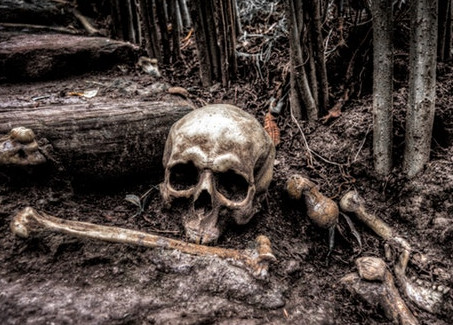Old MacDonald Had A Corpse
PICTURE CREDIT: SkitterPhoto at Pexels
Reviewing: Death’s Acre / Beyond the Body Farm by Dr Bill Bass and Jon Jefferson
The Motive:
As we learned in Unnatural Causes, gaining a deep understanding of crime scenes sometimes requires people to do extraordinary and grisly things. But when Bill Bass set up his research facility into human putrefaction, he may have managed to out-grisly a pack of carnivorous bears.
Welcome to the Body Farm.
The Evidence:
In Knoxville Tennessee you’ll find an portion of land where the civic-minded have committed their cadavers to rot for science. This generosity furthers knowledge on how dead human flesh behaves under varying conditions, knowledge ultimately directed towards identifying victims, and hopefully, their murderers. These books tell Bill Bass’s story, of his career, of the establishment of his research facility and of key criminal cases he has been involved in. Through reading the second on e-book that I learned of the paper-only existence of the first, but I’m very glad I did.
The job of the Forensic Anthropologist is to help identify remains of a sort far less fresh than would be given to a regular pathologist. Bill Bass was frequently called in to work with a scant few bones, often in fragments. From what little he was given he would attempt to determine what he called “the big four”: age, sex, race and stature, hoping these attributes would serve as stepping stones to a confirmed identity.
His early years were spent in archeology, gaining experience in locating and preserving Native American remains before flooding from a new reservoir. This earned him an unwelcome reputation as something of a graverobber in tribal circles, but proved a good grounding for his ultimate career in forensics. In fact, Bass describes death scene investigation as sharing a key similarity with an archeological dig, both being types of scientific research that completely destroy the object of their study. For this reason photography was an invaluable aspect of his forensic process, and he pithily described his practice of shooting his way in and out of any crime scene.
Once established, Bass quickly became a go-to contact for local investigators with a mysterious body-parts. Due to the amount of animal rustling in his area questions arose around how to establish the time of death for farm animals. Bass proposed experiments on the rate of decomposition through different seasons, an exercise that would only be possible with access to a supply of dead livestock. That proposal was not taken forward, and of course, such experimentation could never happen with human bodies. Or could it?
Embracing such a challenge would clearly require strong motivation, but Bass found exactly that after an unusual case where his estimated time of death proved adrift by nearly 113 years. Those familiar with crime-show pathologists pin-pointing death to within a few hours might need a moment to absorb that. In 1977, the state of knowledge was such that an expert in forensic anthropology could be off by more than a century! Bass decided fixing that situation required unearthing much more information about human decomposition, information that could only come from exhaustive experimentation. And so, the Body Farm (more formally known as the Forensic Anthropology Center) came into being. The facility became a target of controversy, experiencing local protests and negative media coverage. While it is completely understandable that many find the place ghoulish, perhaps what protected the facility ultimately has been the value of the research to the forensic and law enforcement communities. For example, they developed an objective method to determine time since death based on temperature records and the state of decay, so called accumulated degree days, and were pioneers in forensic entomology. They have a history of working closely with law-enforcement professionals, fielding questions that their facility was uniquely equipped to answer.
But beyond the science, there is human interest in these books too – documenting Bass’s childhood loss of his father to suicide, his losing two wives to cancer, his ensuing disenchantment with religion. More than simply an excellent resource for the lay-person interested in forensics, Death’s Acre and Beyond the Body Farm remind us how humanity illuminates even the darkest corners. Bass developed a touching relationship with the skull and femur of a murder victim. Despite the fact that her murderer was never caught, he gave those bones a special role: by following him into labs and classrooms and training countless other students and investigators, he ensured that victim helped solve other crimes, catch other murderers, save other lives. While some see the Body Farm as grotesque, in reading these books I’ve come to see the argument as more nuanced. I emerged with the feeling that Bill Bass’s research, however shocking in concept, maintains an inner core of due respect for the dead, both the victims of crime and the body donors who have helped science find justice for others.
The Verdict:
These are great books about an unusual and important location on the map of criminal research. In particular, Death’s Acre is well worth seeking out second hand, even if (like me) your reading is usually consumed from a e-reader. There now exists a series of fiction books based around the facility, but I hope the publisher digitises Death’s Acre – it deserves to be more widely available.



Recent Comments